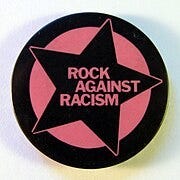The Evolution of the Far Right in the UK: A Personal Reflection
Written on
Chapter 1: A Disturbing Memory
The phrase “We hate people like you” is etched in my memory even after forty years. It was during a “Rock Against Racism” concert in Jubilee Gardens, close to the Greater London Council County Hall, around 1985. At that time, “Red” Ken Livingstone was a formidable opponent to then Prime Minister Margaret Thatcher, who eventually dismantled the organization. My father had devoted his career to that building, and I had recently started my own journey there in a low-ranking clerical position, a time characterized by typing pools, pin-up calendars, and desk smoking.
This period coincided with the miners' strike, when groups of distressed workers gathered outside County Hall, advocating for the miners with cries of “Support the Miners” or “Coal not Dole.” Thatcher's agenda aimed to dismantle the unions, and the miners, led by the controversial Arthur Scargill, represented her greatest challenge. Having recently studied Marxism at Leicester University, I participated in a bus trip to show solidarity with the miners and visited one of the pit villages.
During this time, race relations in the UK were severely impacted by the National Front (NF) and the British National Party (BNP), both of which organized regular marches and rallies and contested local elections, sometimes succeeding.
Certain areas of London were off-limits if you didn’t fit the mold. Attending Chelsea football matches revealed rampant racism and anti-Semitism. I avoided the notorious "Headhunters," a hooligan faction within “The Shed” stand, often infiltrated by aggressive fans from West Ham or Millwall.
Unbelievably, Chelsea fans would chant about gassing Jews when Tottenham visited, and even boo their own black players, reflecting the pervasive racism in the stands. I was there for the sport, during a time of stars like Pat Nevin and Lee Dixon, and made sure to steer clear of trouble when it flared up.

The “Rock Against Racism” concerts provided a vital platform for promoting inclusion and diversity, spearheaded by musicians in the “Red Wedge” movement. I was part of a diverse crowd at the concert, enjoying street food and the energetic performances from artists such as Billy Bragg, Elvis Costello, Madness, Tom Robinson, Bananarama, and “The Specials.” Their song “Ghost Town” remains a poignant reminder of that time, encapsulating the spirit of collaboration among different races:
The aroma of flavorful dishes filled the air, with jerk chicken blending with curry scents, while powerful music reverberated through our bodies. The atmosphere was vibrant, with colors and positivity under the summer sun.
Chapter 2: Confrontation and Reflection
Suddenly, I sensed a shift in the crowd's mood, as a disturbance disrupted the joyful ambiance. A line of skinheads, reminiscent of a sinister serpent, made their way